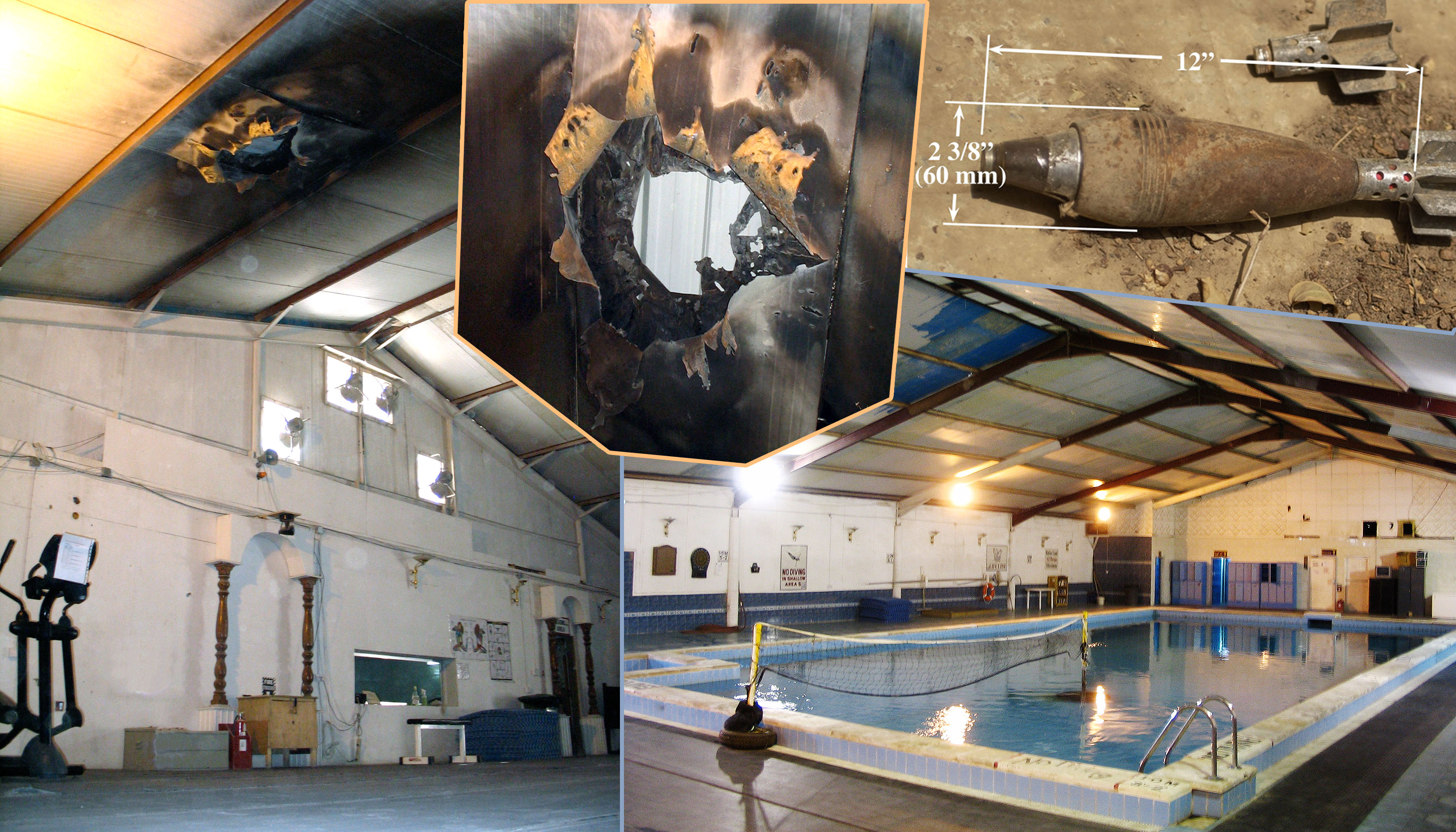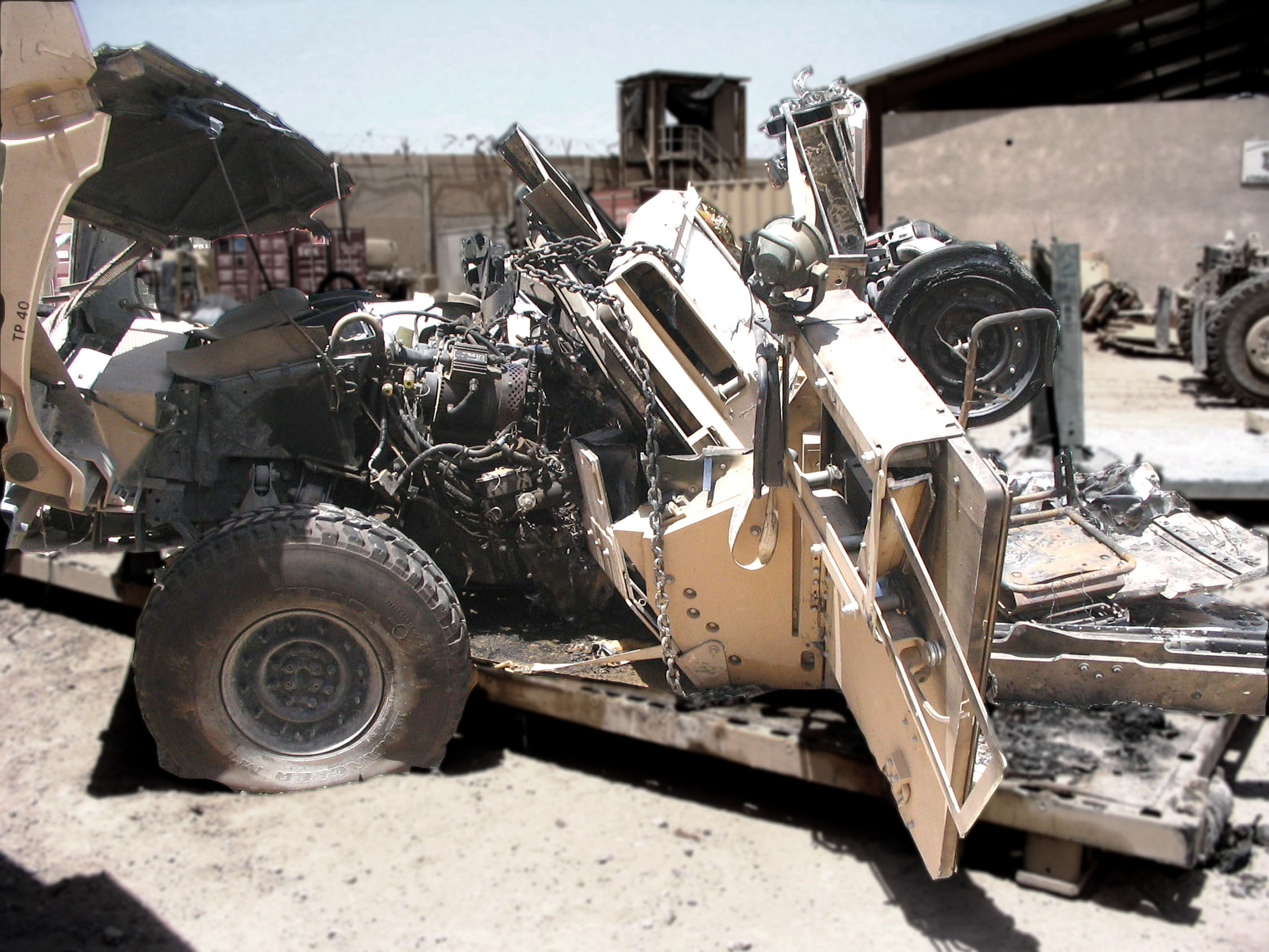IRAM Deadly New WeaponChapter 79 of Balloon Wars: An ISR Operator's Account Of The Wars In Iraq & Afghanistan
Chapter 79 – New Weapon Fired at FOB Loyalty
FOB Loyalty IRAM attack
Details from Winston of the IRAM Attack. PTDS not used to look for other bongo trucks.
With 40 killed, April was the worst month for the Americans in 2008. Several were the result of a very destructive attack on April 28 on FOB Loyalty with a weapon rarely used up until then in Iraq, the “IRAM”.
News of the attack was on the SIPR network so we heard about it shortly after it happened and our first concern was for the crew and equipment at Site Three. Winston was the site lead so I called him.
He said the attack was initiated from just outside the wall which confused me. Rockets are longer range weapons. He explained the IRAM is a special kind of rocket. An “Improvised Rocket Assisted Munition” consists of a canister, perhaps a propane cylinder, full of C4 plastic explosive attached to a 107 mm rocket. It’s a heavy payload so the rocket can’t carry it very far. There were seven launchers with two rockets each mounted in the bed of a bongo truck. High sidewalls around the truck bed hid the contents. Straw soaked with diesel fuel filled the open-top trailer. The launchers were set at just the right angle and the truck parked in the right spot and pointed in the right direction to land the rockets on the FOB. Once parked the driver got out of the truck and walked away when he or someone else launched the rockets from a distance with a cell phone. As the rockets blasted through the straw they ignited it setting the truck on fire and destroying the evidence.
Balloon Wars Home Page
OTHER SELECTED CHAPTERS
Chapters 1 & 2 – PTDS & the ISR Network
Chapter 12 – Battle in Al Atiba’a
Chapter 17 – Muqtada al-Sadr
Chapter 33 – Urged to Jump
Chapter 40 – Mortar Attack
Chapter 78 – UTAMS Repair
Chapter 82 – Bagram and Waza Khwa
Chapter 86 – Captain Ellis
Chapter 87 – 9th Inflation and The Karez
Chapter 116 – Just Living
Click here to comment on any of the Balloon Wars sample chapters
Buildings and vehicles on the FOB were destroyed and there were craters in the extremely hard ground up to 20 feet in diameter and six feet deep. Sixteen soldiers were wounded and three killed. The soldiers who died were on a porch that I sat on everyday after I showered. I had to take cover from mortar attacks twice while on that porch but the men who were hit there that day didn’t get much of a warning, if any.
That many rounds of such explosive force had to be frightful. Winston had been through a lot in his military and military contracting careers. The relatively minor attacks we’d been through together seemed not to really affect him. But as we spoke about the deaths that had just happened the shock was apparent. There was no denying the worry either. Like the EFPs these weapons came from Iran and more trucks configured in the same fashion were probably on the streets.
We realized that our system was the perfect tool for spotting them. The POOs for these weapons would be right outside the walls of their targets so if Camp Slayer was to be attacked a bongo truck would have to park near the balloon. New scanning instructions should have been issued telling us to scan the perimeters of all the FOBs, Joint Service Stations and COPS in our AOs but those instructions never came. Even with the new tactic proven and the discovery that the components originated in Iran our scan decks didn’t change. We continued to scan the same routes for IEDs although I did look for bongo trucks on those routes.
The autonomy I mentioned didn’t apply to the operators at Site One. Attempts to use the tools at our disposal independently or in a manner that varied from how the site leadership called for was unacceptable to them. When the instruction to look for bongo trucks didn’t come we could have done it anyway. There were times, say after a route had been swept five times and before the sixth, when it would have been OK to ask the unit we were working for at the time if they would allow us to take a minute to scan the entire perimeter of the VBC for a lone, parked bongo truck with an enclosed flatbed. If they said no we wouldn’t but they wouldn’t say no. They knew about IRAMs. Such a scan, around the entire thirty mile perimeter of the VBC, could literally be done in a minute.
I could have done it on my own and tried to get others to do it too but that would have meant another battle and by then my will to suffer for my principles was worn down. There was no possibility that I could have won.
OPERATION IRAQI FREEDOM BACKGROUND
First journal entry minutes after an IED detonation.
Assessing The Surge is a NY Times web page with articles and videos that assess the effect of the "Surge" in thirteen Baghdad neighborhoods, including Jihad, the one closest to Site 1.
The Killing Fields of Baghdad
from March, 2008 is the second of Ghaith Abdul-Ahad's three film series. In it he visits Baghdad's killings fields on the edge of Sadr City. The scene of thousands of sectarian murders over the previous three years, it is a desolate and evil place: "Only the killers and the killed ever come here" says Abdul-Ahad. Here in the thousands of graves marked with only scrap metal and junk lie the victims of the Shia militia gangs.
Baghdad's rich tradition in tatters was written in 1998 by Anthony Shadid, the Pulitzer Prize winning journalist who died while covering the uprising in Syria in 2012.
"Surreal Mother & Child" was an original oil painting for sale at the bazarre outside the big PX by an Iraqi artist whose name I didn't record.
June 10, 2007 Journal Entry about social contact with Iraqis.
Charles Lindholm is a professor of anthropology at Boston University and his book, The Islamic Middle East: An Historical Anthropology is an anthropologist's perspective on the history of the Middle East that places Islam in context with the other conditions that have shaped the cultures of the tribes and ethnicities of the region.
Koranic Mythology Behind Al-Sadr's Mahdi Army NPR's Mike Shuster reports on the mythology behind the Mahdi army, the militia supporting Iraqi insurgent leader Moqtada al-Sadr. The group has invoked the mahdi, an important Koranic symbol, to lend religious significance to their fight. (aired August 24, 2004)
Asia Times Online article on the motivation behind Muqtada al-Sadr's call for a cease fire in the summer of 2007.
Blast radii of munitions used against Iraqi and coalition forces.
© Robert A. Crimmins
Getting Used To the Racket, Rockets Stars and Stripes article in the September 6, 2007 edition about the frequent indirect fire attacks on FOB Loyalty.
June 15, 2007 Journal Entry about driving across the VBC at night.
Mahdi Army uses "flying IEDs" in Baghdad is a LongWarJournal.org article about the use of Improvised Rocket Assisted Munitions, IRAMs, against FOB Loyalty on April 28, 2008 and elsewhere.
Old prison a chilling reminder for Iraqis was in Stars and Stripes on April 3, 2005. It's about the Iraqi secret police headquarters and prison that became FOB Loyalty.
Six Questions For Wesley Morgan is a short interview with a college sophomore who spent the summer of 2007 in Iraq at the suggestion of General Patraeus.


